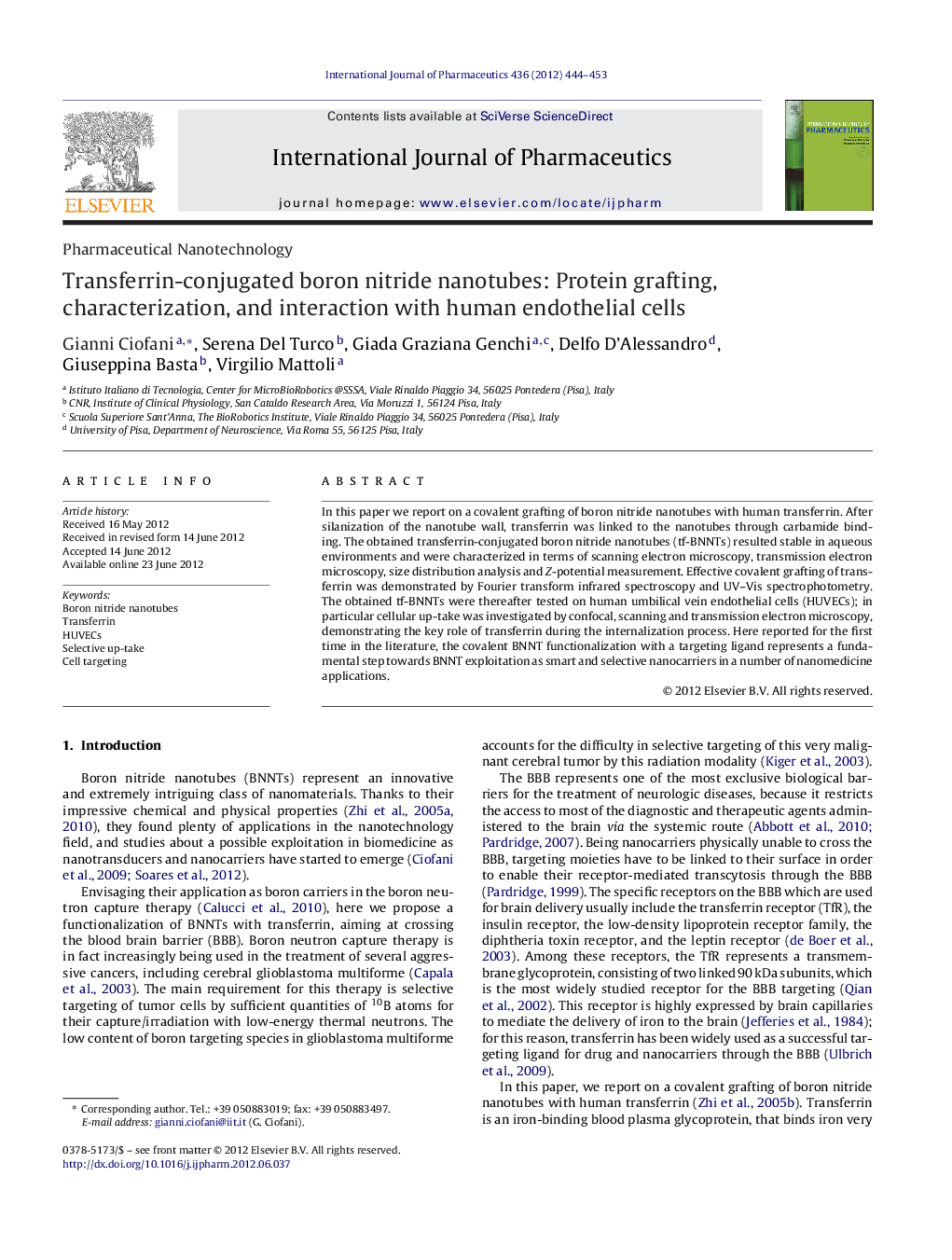| Article ID | Journal | Published Year | Pages | File Type |
|---|---|---|---|---|
| 5820804 | International Journal of Pharmaceutics | 2012 | 10 Pages |
In this paper we report on a covalent grafting of boron nitride nanotubes with human transferrin. After silanization of the nanotube wall, transferrin was linked to the nanotubes through carbamide binding. The obtained transferrin-conjugated boron nitride nanotubes (tf-BNNTs) resulted stable in aqueous environments and were characterized in terms of scanning electron microscopy, transmission electron microscopy, size distribution analysis and Z-potential measurement. Effective covalent grafting of transferrin was demonstrated by Fourier transform infrared spectroscopy and UV-Vis spectrophotometry. The obtained tf-BNNTs were thereafter tested on human umbilical vein endothelial cells (HUVECs); in particular cellular up-take was investigated by confocal, scanning and transmission electron microscopy, demonstrating the key role of transferrin during the internalization process. Here reported for the first time in the literature, the covalent BNNT functionalization with a targeting ligand represents a fundamental step towards BNNT exploitation as smart and selective nanocarriers in a number of nanomedicine applications.
Graphical abstractTransferrin-grafted boron nitride nanotubes (green fluorescent) are actively internalized by human umbilical vein endothelial cells (in red, f-actin staining; in blue, nucleus staining).Download high-res image (182KB)Download full-size image
